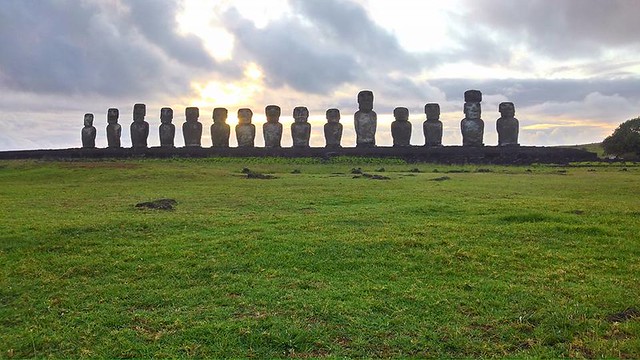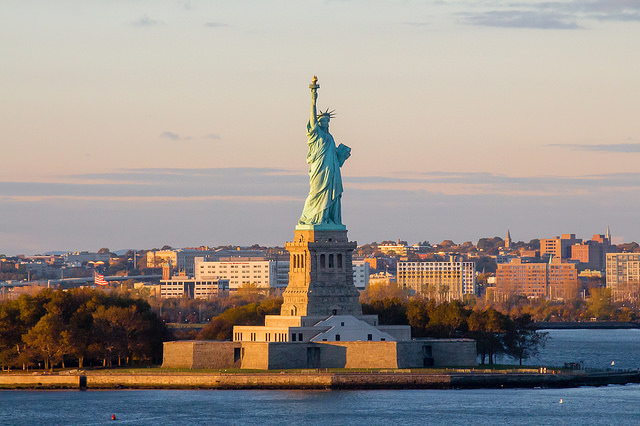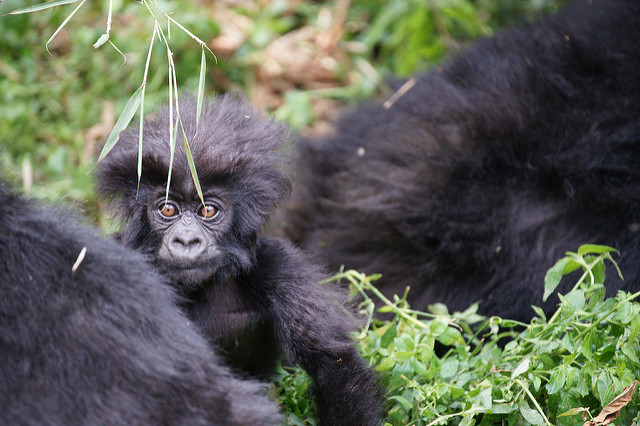http://e-info.org.tw/node/115768
世界遺產SOS 聯合國:氣候變遷成頭號威脅
文字大小
5 1 Share1
摘譯自2016年5月26日ENS法國,巴黎報導;姜唯編譯;蔡麗伶
喜歡到世界遺產旅遊嗎?可能要加緊腳步了,因為聯合國警告,氣候變遷已是全球世界遺產的頭號威脅,觀光業和野生動物也將成為受害者。
智利復活節島,部分石像未來可能慘遭滅頂。攝影:葉人豪。
聯合國最新研究 部分世界遺產可能「滅絕」
聯合國教科文組織(UNESCO)、聯合國環境規劃署(UNEP)和「 科學家關懷聯盟」(Union of Concerned Scientists)26日發表「氣候變遷下的世界遺產與旅遊」(World Heritage and Tourism in a Changing Climate)報告,檢視29個國家中31處受氣候變遷威脅的自然和世界文化遺產,這些威脅囊括冰川融化、海平面上升、氣候極端化、乾旱惡化和野火季延長等。
報告也紀錄到威尼斯、巨石陣、加拉巴哥群島、南非開普植物王國、哥倫比亞卡塔赫納港、日本知床國家公園等代表性觀光景點的氣候變遷現象。
「部分復活節島石像因為海岸侵蝕,有滅頂的危險。許多全世界最重要的珊瑚礁生態,像是新喀里多尼亞島,今年因為氣候變遷的關係,珊瑚礁出現空前的白化現象。氣候變遷可能使部分世界遺產喪失資格。」科學家關懷聯盟氣候能源代理主任馬克姆(Adam Markham)說。
所費不貲! 世界遺產適應氣候變遷大不易
報告研究美國自由女神像和義大利潟湖兩項個案,說明世界遺產要增加氣候變遷適應能力所需的龐大資金。自由女神像和艾麗斯島2012年珊迪颶風後的重建工作,加上未來暴風雨和海平面上升的災害預防工作,截至目前已經花費1億美元。
在威尼斯,興建防洪閘門的工作花費超過60億美元。
紐約自由女神像面臨海平面上升的威脅。圖片來源:John Cook(CC BY-NC-ND 2.0)。
世界遺產劣化 觀光業、野生動物都是受害者
由於世界遺產必須有「突出的普世價值」,報告建議世界遺產委員會在認列世界遺產之前,考量當地的氣候變遷風險。
報告指出,氣候變遷也是觀光業的潛在威脅。極端天氣現象、保險費用增加、安全性疑慮、缺水和景點本身被破壞,都會影響觀光收入。
文化與自然世界遺產因氣候變遷而持續劣化,景點的吸引力和當地社群的商機都將減少。野生動物也是氣候變遷的受害者,尤其是野外僅剩幾百隻的山地大猩猩。
烏干達的大猩猩觀光產值一年約2000萬至4600萬美元,但氣候變遷可能導致棲地環境變化,威脅大猩猩本身生存和觀光收益,甚至讓大猩猩容易感染人類疾病。
全球僅剩不到千隻山地大猩猩,大多生活在列為世界遺產的國家公園。圖片來源:Bradford Duplisea(CC BY-NC-ND 2.0)。
全球僅剩880隻山地大猩猩(Gorilla beringei beringei),大多數生活在烏干達布溫迪國家森林公園和烏干達、盧安達和剛果民主共和國邊界的維龍加國家公園。這些地方的山地大猩猩因為森林管理和保護策略改善,近幾十年數量有所增加。而這些資金部分來自盧安達和烏干達的大猩猩觀光業。
World Heritage Sites at Risk from Climate Change
Climate change is quickly becoming one of the most challenging risks for World Heritage sites and the tourists who want to visit them, finds the report “World Heritage and Tourism in a Changing Climate,” released today by UNESCO, the United Nations Environment Programme, UNEP, and the Union of Concerned Scientists.
The new report examines 31 natural and cultural World Heritage sites in 29 countries that are vulnerable to increasing temperatures, melting glaciers, rising seas, intensifying weather events, worsening droughts and longer wildfire seasons.
It documents climate impacts at iconic tourism sites, including Venice, Stonehenge and the Galapagos Islands and other World Heritage sites such as South Africa’s Cape Floral Kingdom; the port city of Cartagena, Colombia; and Shiretoko National Park in Japan.
“Some Easter Island statues are at risk of being lost to the sea because of coastal erosion. Many of the world’s most important coral reefs, including in the islands of New Caledonia in the western Pacific, have suffered unprecedented coral bleaching linked to climate change this year,” warned Adam Markham, lead author of the report and deputy director of the Climate and Energy Program at the Union of Concerned Scientists. “Climate change could eventually even cause some World Heritage sites to lose their status.”
In addition, the warming of Greenland’s soils is releasing stored carbon into the atmosphere and contributing to climate feedback mechanisms that are threatening sites throughout the Arctic.
Because World Heritage sites must have “Outstanding Universal Value,” the report recommends that the World Heritage Committee consider the risk of prospective sites becoming degraded by climate change before adding them to the List of World Heritage.
The tourism sector itself is vulnerable to climate change. Threats include more extreme weather events, increasing insurance costs and safety concerns, water shortages, and loss and damage to assets and attractions at destinations, the report points out.
Continued climate-driven degradation and disruption to cultural and natural heritage at World Heritage sites will negatively affect the tourism sector, reduce the attractiveness of destinations and lessen economic opportunities for local communities.
Two of the case studies – the Statue of Liberty in the United States and Venice and its Lagoon, Italy – demonstrate the scale of financial resources that will be required for increasing the resilience of many World Heritage sites in a changing climate.
To date, US$ 100 million has been allocated to the Statue of Liberty and adjacent Ellis Island for the restoration of utilities, services and visitor facilities damaged by Hurricane Sandy in 2012, and to ensure preparedness for the storms that are predicted to continue to increase in intensity in future, with more damaging storm surges resulting from sea-level rise.
In Venice, work is almost completed on a project to build gates to prevent flooding, costing more than US$6 billion.
Wildlife will suffer too, particularly the few hundred remaining mountain gorillas in the wild.
Just under half of the world’s remaining endangered 880 mountain gorillas, Gorilla beringei beringei, live in southwestern Uganda’s Bwindi Impenetrable Forest National Park. Gorillas are iconic and their populations here and in their other stronghold in the Virunga Mountains on the borders of Uganda, Rwanda and the Democratic Republic of Congo, have been increasing in recent decades as a result of effective forest management and protection strategies. These efforts have been helped by revenue from gorilla tourism in both Rwanda and Uganda.
Estimates put the value of gorilla tourism to Uganda alone at US$20–46 million annually. But the gorillas and the economic benefit they represent are likely to come under threat from climate change.
A changing climate is expected to increase stress and threats to gorillas due to alterations in habitat conditions and perhaps greater vulnerability of the animals to human diseases.
※ 全文及圖片詳見:ENS



沒有留言:
張貼留言